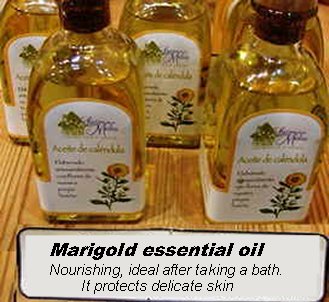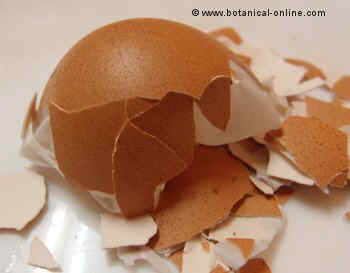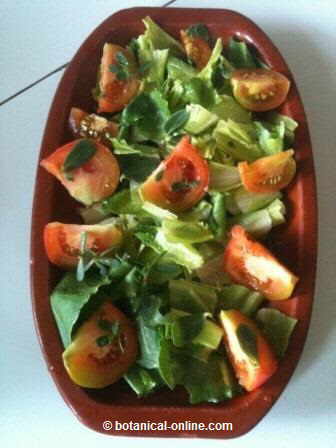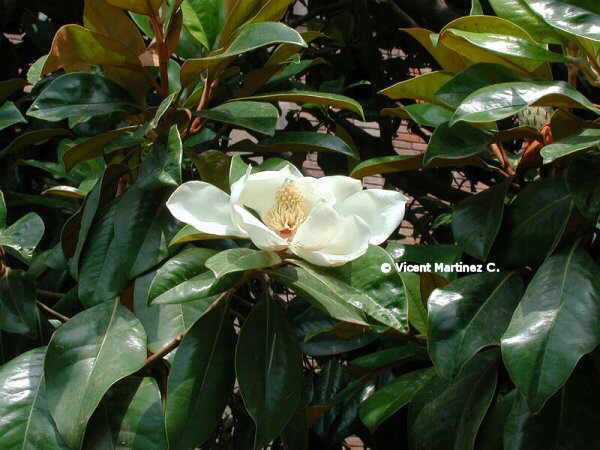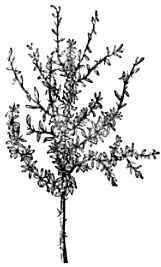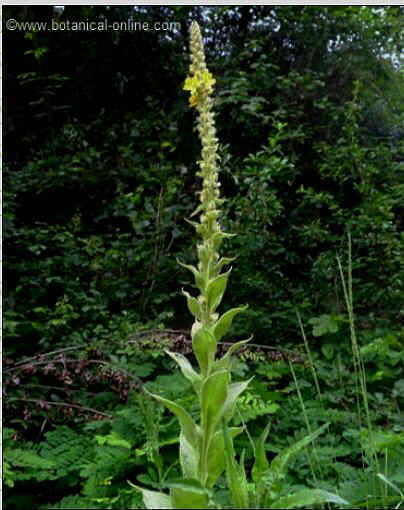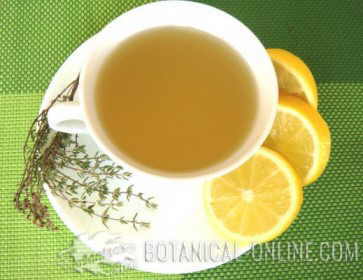Contents
GROWING PECANS
 Plant characteristics
Plant characteristics
– Name: pecan or pecan hickory (Carya illionensis)
– Deciduous tree native to North America
– Height from 30 to 50m.. Growing quite fast.
– Gray wooden trunk with numerous ascending branches forming a rounded crown.
– Leaves composite, imparipinnate, with 9-17 leaflets, narrow, with serrated margins and sharp apex.
– Inflorescence in axillary racemes.
– Flowers monoecious.
– Fruit in brown nut, ovoid, 4 ribs, finished in tip and thin shell, to 4cm. long. They are consumed as food.
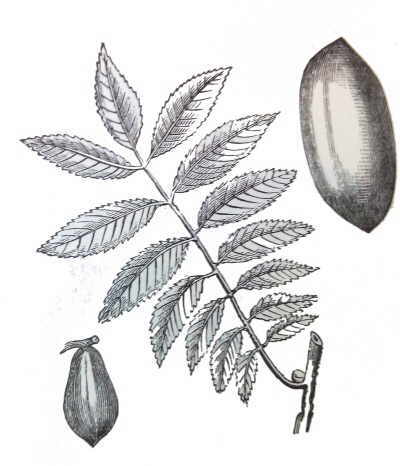 Illustration of a branch, a fruit and a seed of pecan |
Varieties of pecans
– Elliott: Vigorous and productive tree. Nuts are small, but they have a good taste. Its shell is very thin, which can easily be broken. Resistant to fungus Cladosporium caryugenum.
– Schley: Early variety with large, elongated and thick fruit, excellent quality and taste.
– Green Island: Robust, selected for its optimum fruit size, good productivity and flavor.
– Mullahy: Early and very productive, originated in the region of Ontario. Fruits of good size and flavor suitable for commercial destination.
 Pecan weather requirements
Pecan weather requirements
– Warm, humid climates, with hot and humid summers.
– Average summer temperatures of 24 – 30C.
– It grows in full sun and sheltered from the wind.
– Deciduous tree tolerates the cold winter months.
– It does not tolerate long periods of flooding.
– Non resistant to damage by fire, because of its thin bark.
– It does not tolerate coastal areas and must be planted in a place protected from strong winds. Its branches are brittle and break easily. The wind can fall off prematurely.
 Pecan type of soil
Pecan type of soil
– Deep, moist, well-drained soils
– Soil: prefers loamy soil, it tolerates sandy-loamy ones.
– It can resist a PH between 4.5 and 8.3. The optimal pH is between 5.5 and 6.5.
– In very acidic soils, it can develop magnesium deficiency, which is characterized by the presence of deformed leaves.
– Fertile and rich in organic matter soil.
 Pecan propagation
Pecan propagation
SEXUAL REPRODUCTION BY SEEDS
– It is ideal to plant seeds in situ, in winter, as seeds previously require a cold season time.
– Protect it from mice and predators (cut a piece of bottle and place a grid on top so that the animals can not eat the nut).
– Germination occurs naturally in spring, about April. Soil moisture is necessary for it to germinate.
– Plant it in the final place as soon as possible. Choose a sunny, moist location, protected from the wind. The tree quickly develops a deep taproot, which needs to be rooted in the ground soon.
– Do not fertilize during the first months of planting.
– Take care of moisture especially during the first few months, do not let it dry. The soil should always be slightly moist.
– Protect from frost the first winter with mulch.
– If conditions are optimal, (moisture, sun and nutrients) the adult tree can grow up to 90cm. per year.
– The tree produces fruit approximately when 20 years of age, although its most productive age happens at age 75.
– Commercial varieties are grafted.
– A mature tree produces about 40kg. per year.
 Pecan pruning
Pecan pruning
– It’s a pretty fast growing tree that develops many branches.
– Pecan pruning is important, and should be attempted for the tree to develop thick vigorous branches. Shaping should be mainly done during the first 3 years, when it should have develop a main trunk and lateral branches.
– When the tree is adult, pruning has a less important role, but one should ensure that the cup does not become too dense.
 Pecan flowering
Pecan flowering
– Pecans bloom in spring, from March to May, shortly after the first buds of spring.
– The nuts ripen in September and October, and fall from the tree when they reach maturity between October and December.
– It’s a pretty fast growing tree which starts producing fruits approximately after 20 years. Productive trees are 75 years and can reach 225 years, according to written sources.
 Pecan diseases and pests
Pecan diseases and pests
– Scab disease: Scab disease is a very common fungal disease in pecan, produced by fungus Cladosporium caryugenum. The tree is particularly susceptible if irrigation, moisture or rain is too abundant. There are resistant varieties
![]() More information on pecans.
More information on pecans.

